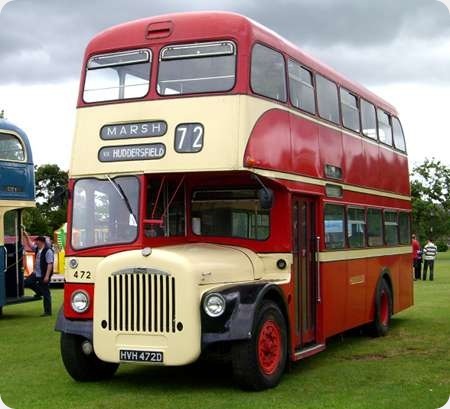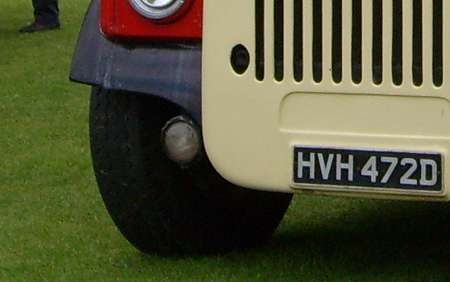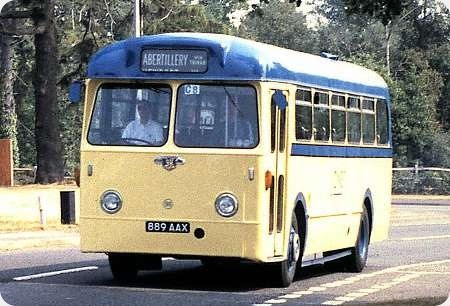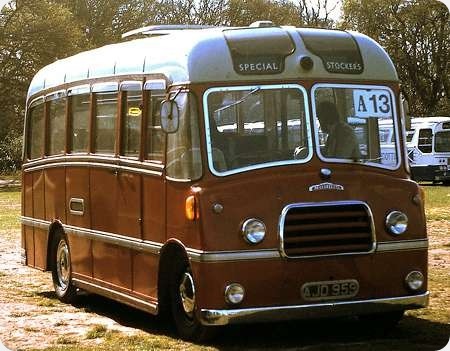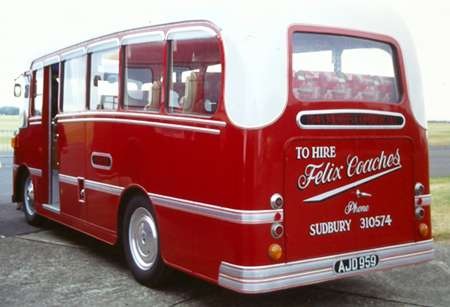Huddersfield Corporation – Daimler CVG6 – HVH 472D – 472
Huddersfield Corporation
1966
Daimler CVG6LX.30DD
East Lancs H41/29F
This is the last Huddersfield Corporation vehicle delivered (numerically) with a front engine and is currently preserved. It was new in 1966 to the Corporation, being withdrawn in 1980, having served 6 years with the WYPTE.
The photo was taken in 2005 at a local bus rally and shows the vehicle turned out in superb condition and displaying the old Corporation livery with the front end swoops.
It is still active and I photographed it at another local rally earlier this year.
Photograph and Copy contributed by Tim Jackson
27/06/15 – 06:40
I rode on this bus this year at Llandudno, and was surprised to be given an ultimate ticket. Perhaps the owners have a big supply of ticket rolls.
A lovely bus, Daimlers don’t get the attention they deserve. Pity about the forward entrance!
Don McKeown
28/06/15 – 05:52
Well Don, Huddersfield used Ultimate ticket machines so that added to the authenticity of riding on it. Despite having served over six years with WYPTE it somehow managed to retain its Huddersfield livery to the end.
Eric Bawden
02/07/15 – 05:45
What’s that white(ish) circle on the offside tyre? It looks like a light to me, but can’t be original . . . and surely can’t be legal now.
I’m assuming that these had Daimatic transmission. Did that completely supersede pre-select, or was pre-select available until the end of production? if it was, then I’m assuming it would have been air-actuated . . . surely that "lethal" spring(?) system had been confined to the bin by then.
Philip Rushworth
02/07/15 – 08:34
It is a light and there should be a corresponding one on the other side. If you look for photos of the bus on Flickr you can find a selection with two, one or zero lights. I believe it is currently displaying the correct two lights.
David Beilby
03/07/15 – 06:38
Philip, Northampton’s last Daimler CVG6s delivered in 1968 had pre-selector gearboxes. For some reason it seems to run in my mind that they may have been of the thigh and knee bruising spring-operated type, as I seem to recall Northampton also specified vacuum brakes on the vehicles. Air-operated systems require the use of an air compressor, whereas vacuum brakes require the use of an exhauster, which would not be compatible with an air-operated gearbox. Ideally we need a Northampton expert to confirm this.
The Huddersfield Daimler CVG6LXs were handsome vehicles, whether bodied by Roe, or East Lancashire. I have fond memories of riding on one or two of the latter between Huddersfield and Halifax, and being impressed by their turn of speed. They sounded wonderful and were also comfortable buses to ride on. That ‘Corporation’ livery was special as well, with the extra cream and streamlining at the front, and it’s distinctiveness is sadly missed.
Brendan Smith
03/07/15 – 06:39
Philip, these did indeed have Daimatic semi-auto transmission, but as far as I know the pre-select spring operated transmission was still available. I think all the Northampton CVG’s had them right up to the last "G" reg.examples, though I doubt any other operator would have bought any for years.
Eric Bawden
05/07/15 – 07:30
I believe that Northampton specified vacuum brakes right up to their last deliveries hence with no air pressure system on the buses the pre selector spring operated transmission was the only option. Generally Operators who specified air brakes took the 2 pedal Daimatic transmission.
Ian Wild
08/07/15 – 05:42
Thanks for the various replies. Did any operator purchase air-actuated pre-selector buses in preference to the Daimatic transmission? Am I correct in assuming that the Daimatic transmission was just a CAV-actuated SCG box built/purchased(?) under license?
Philip Rushworth
Quick links to the - Comments Page - Contact Page - Home Page
